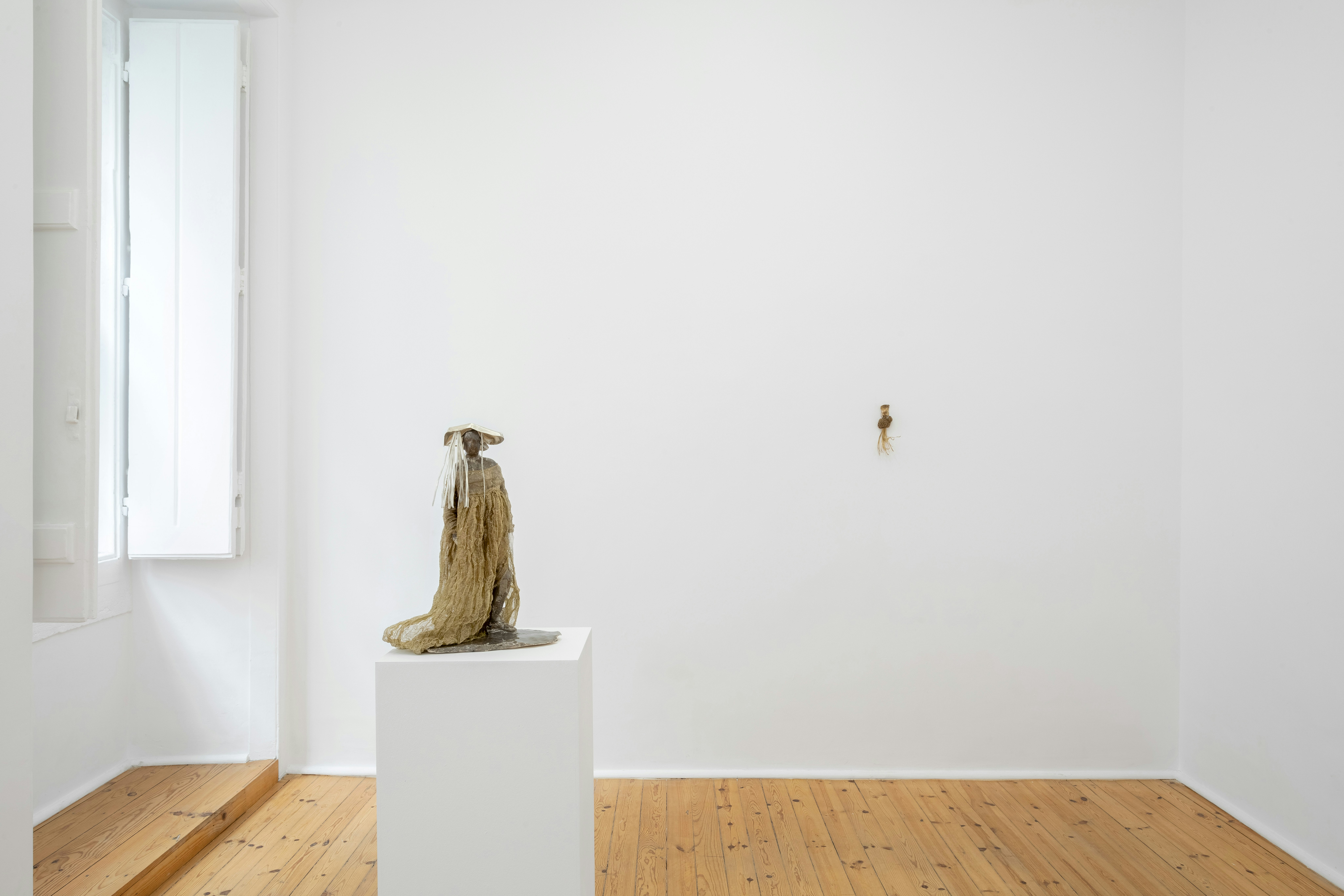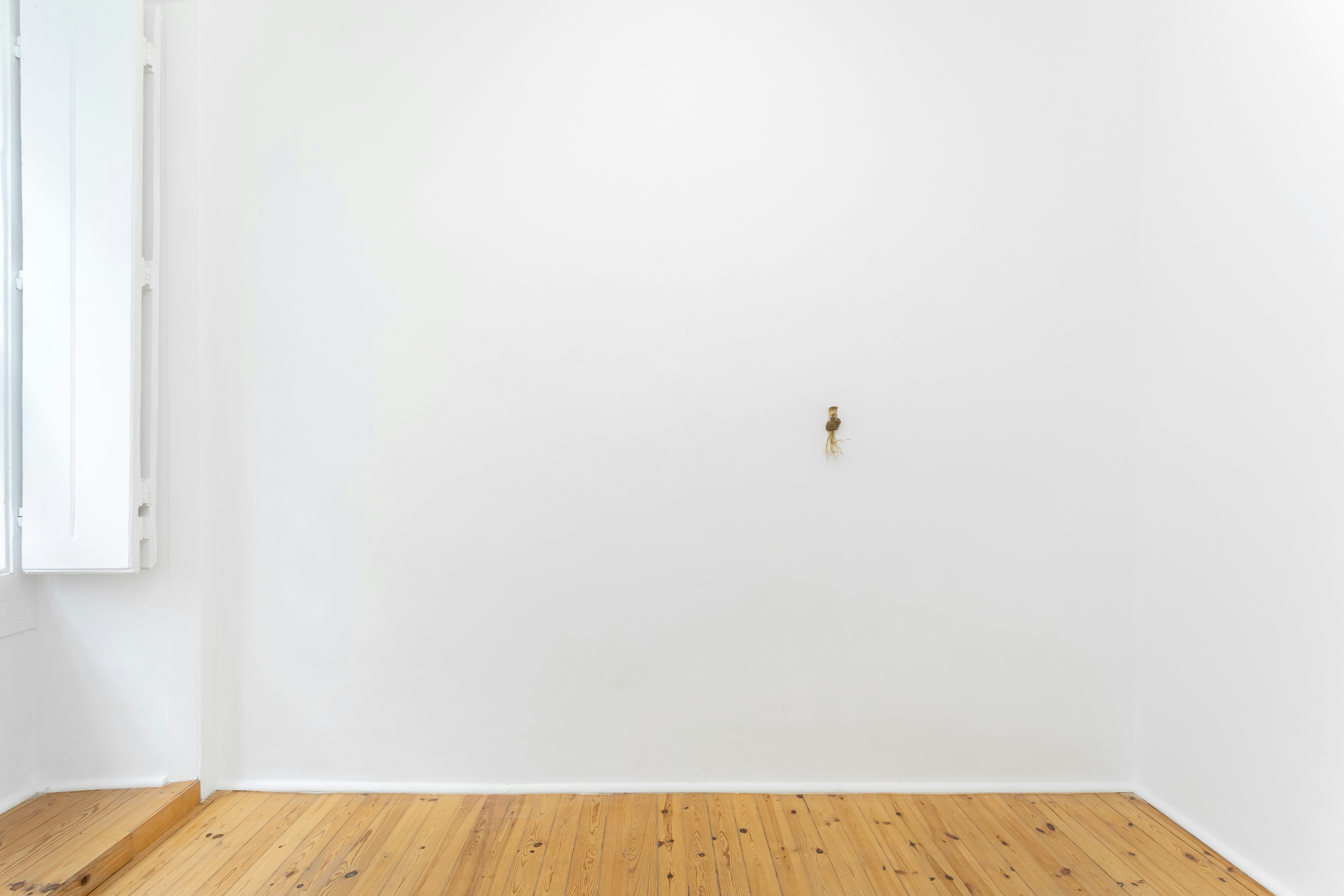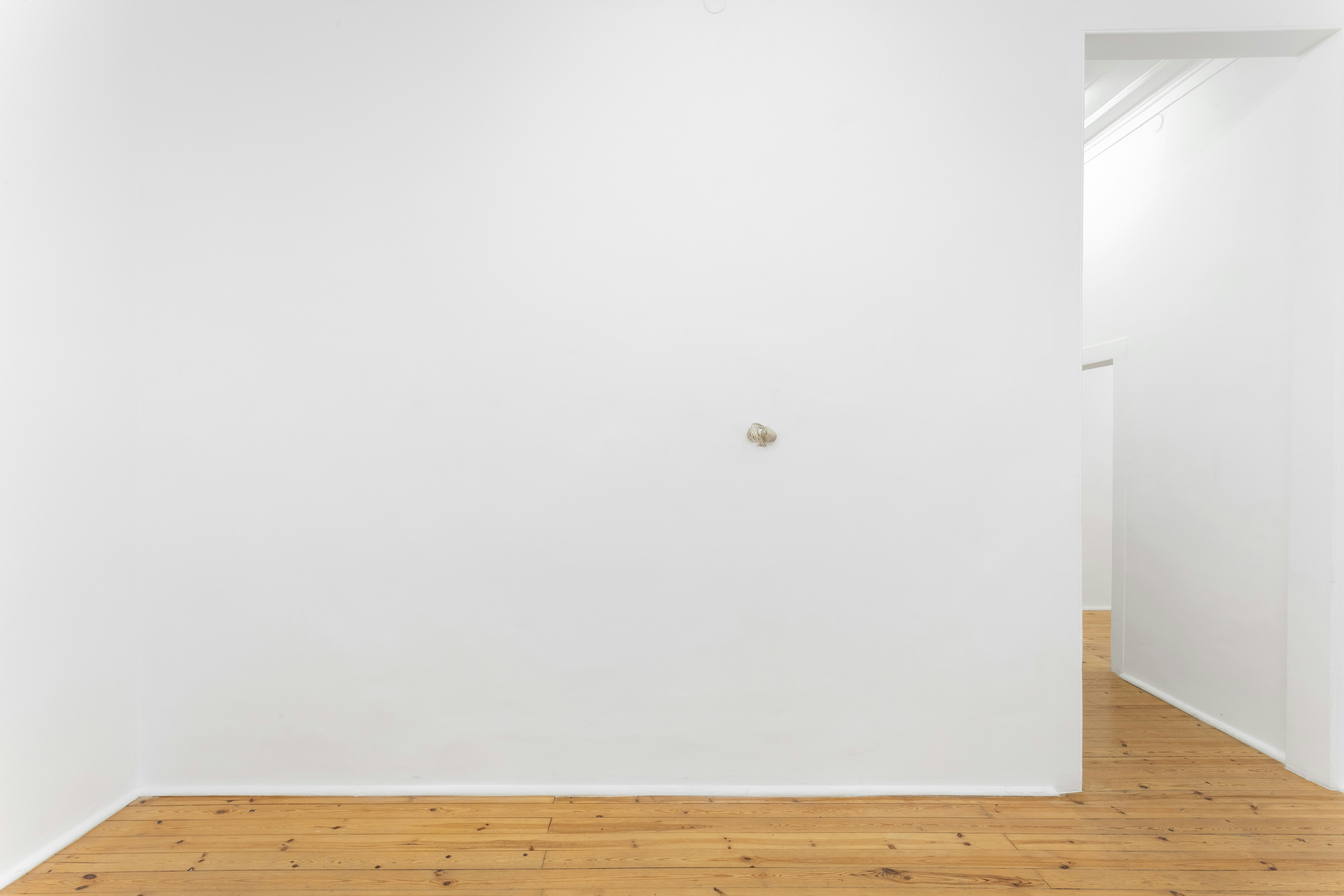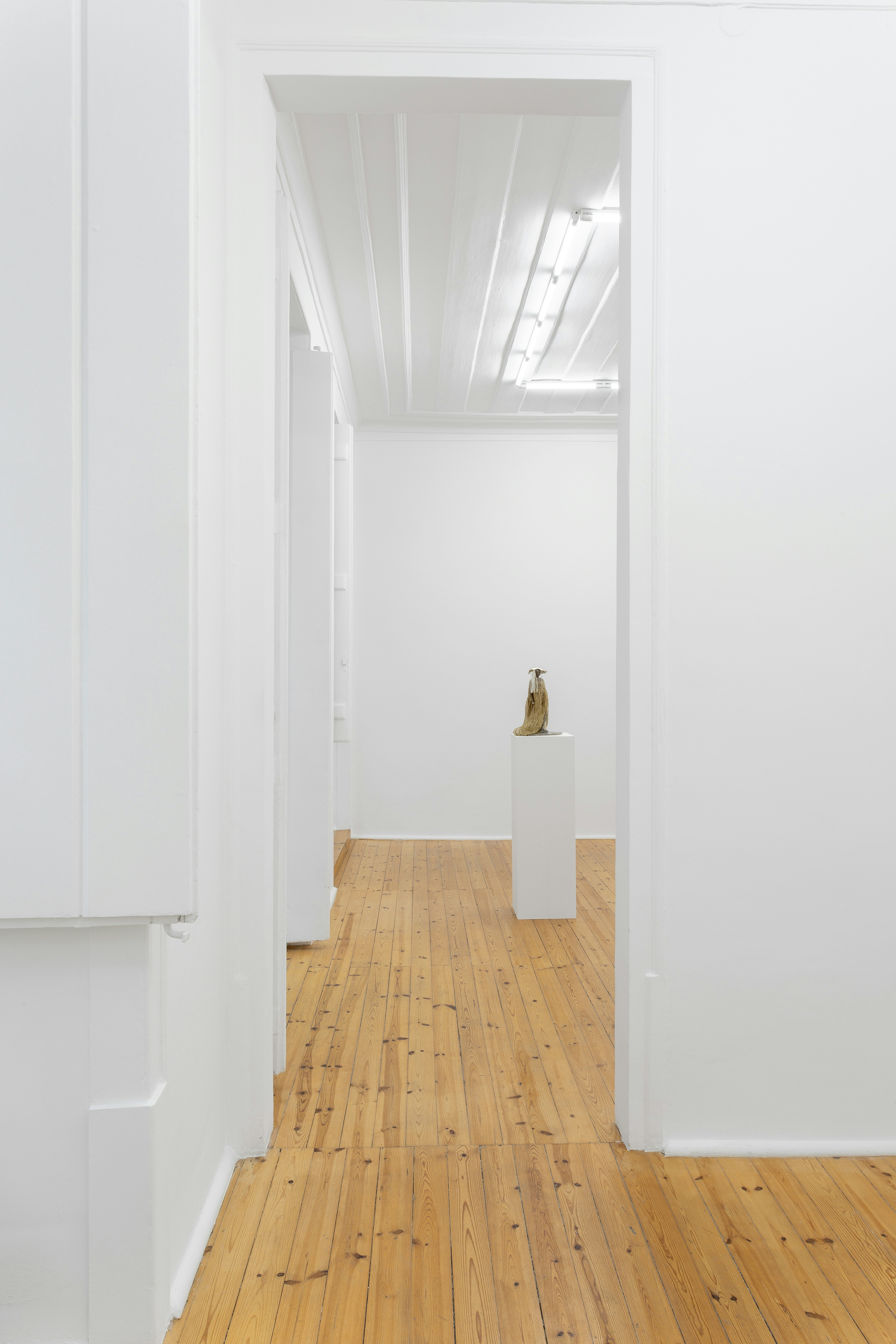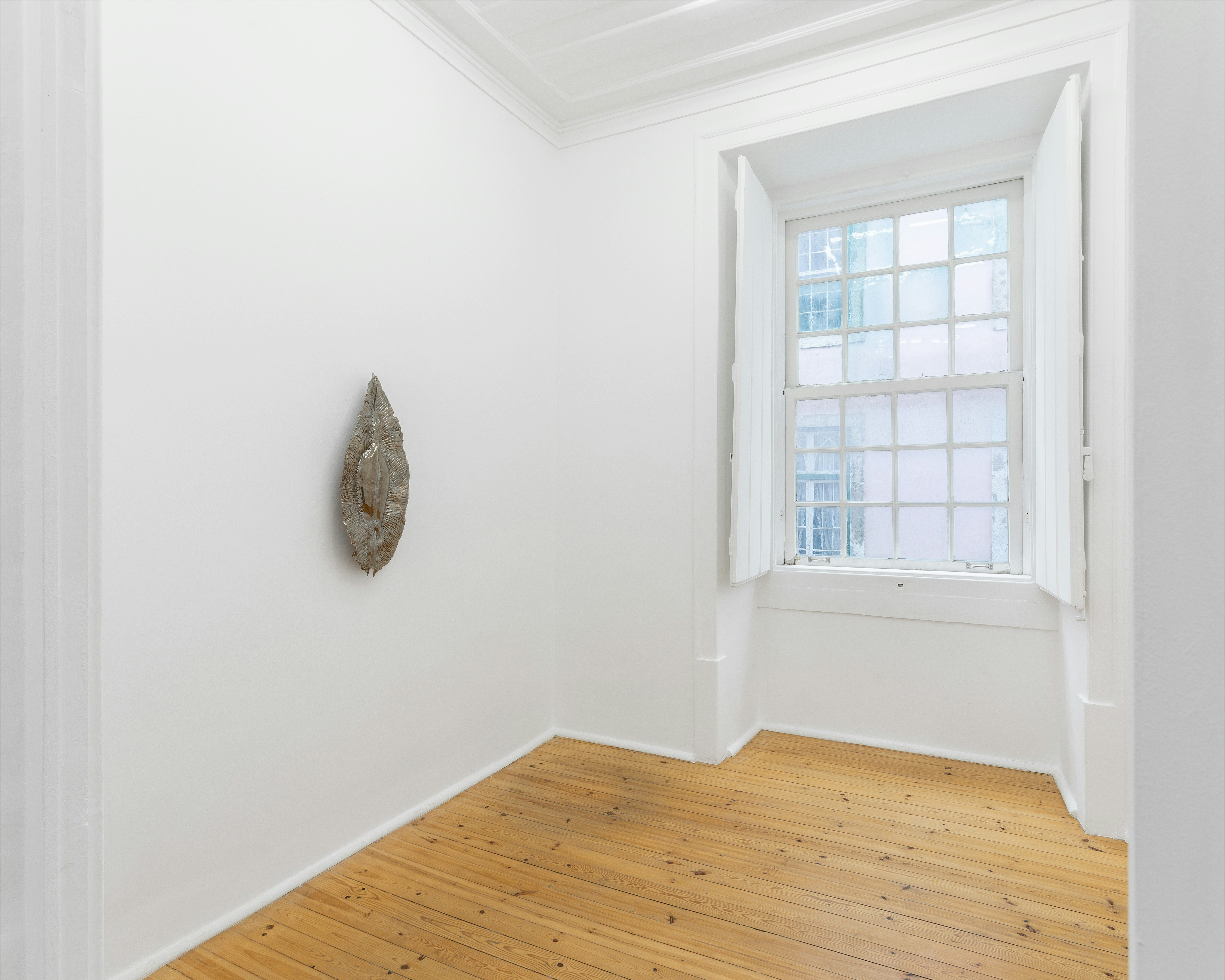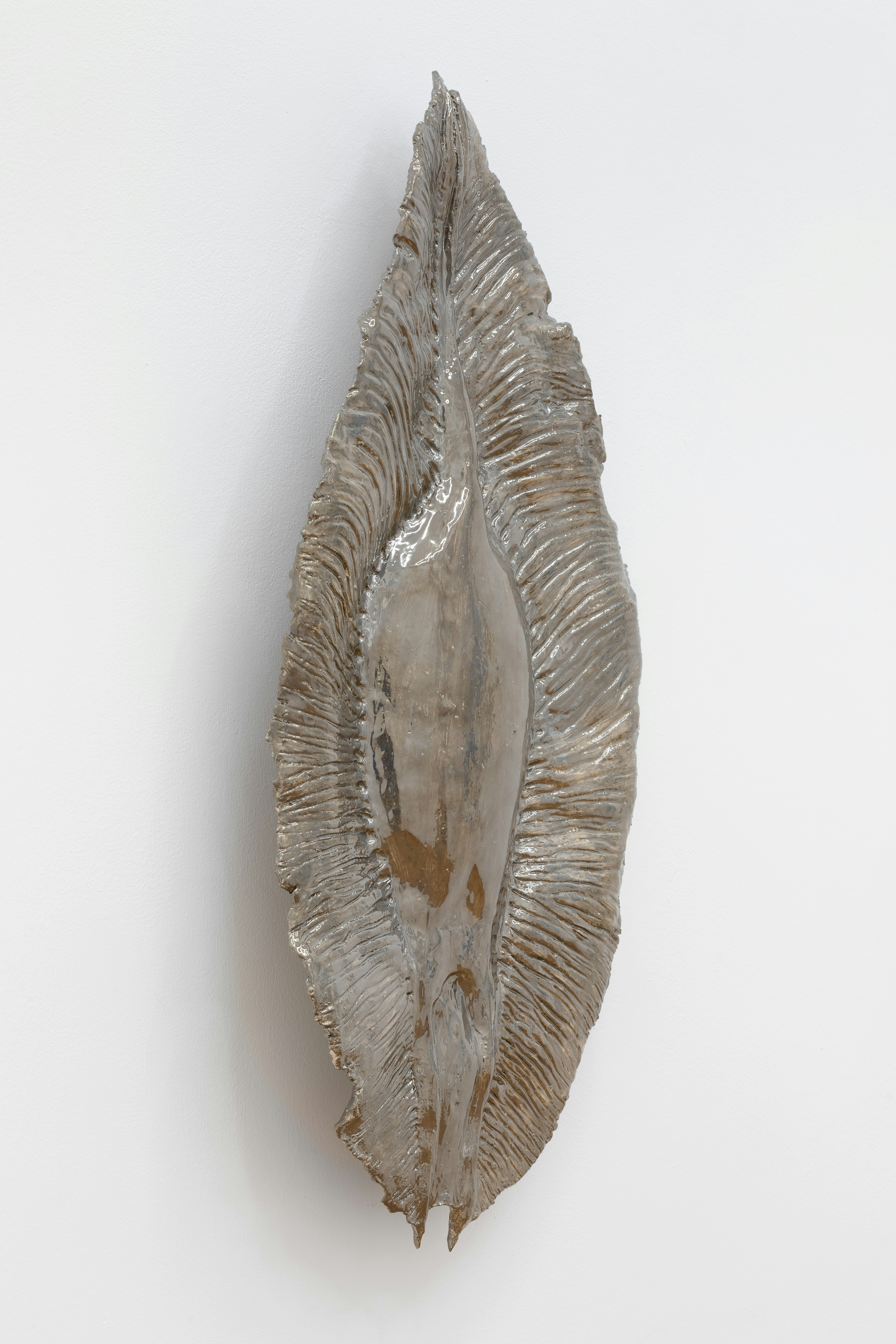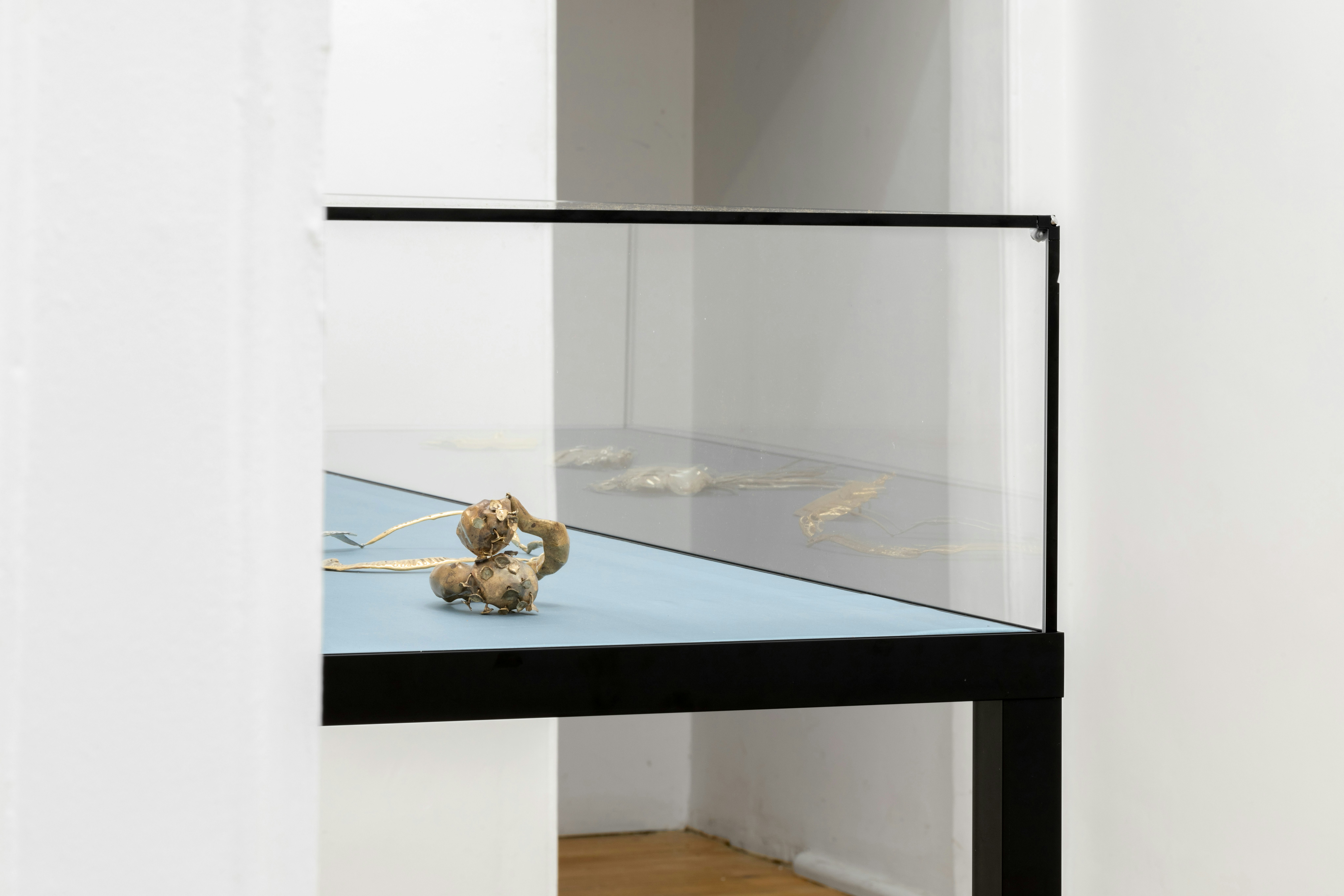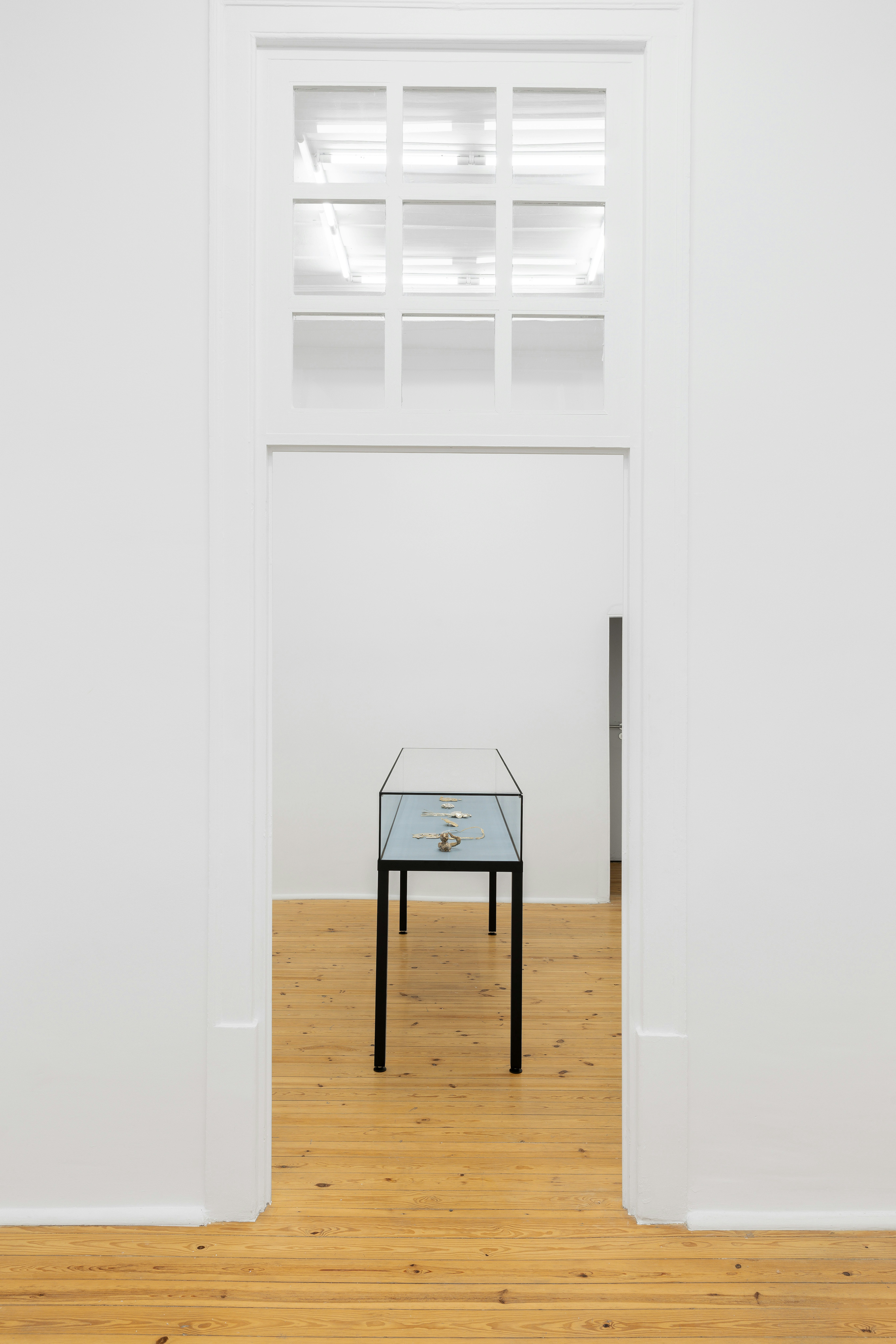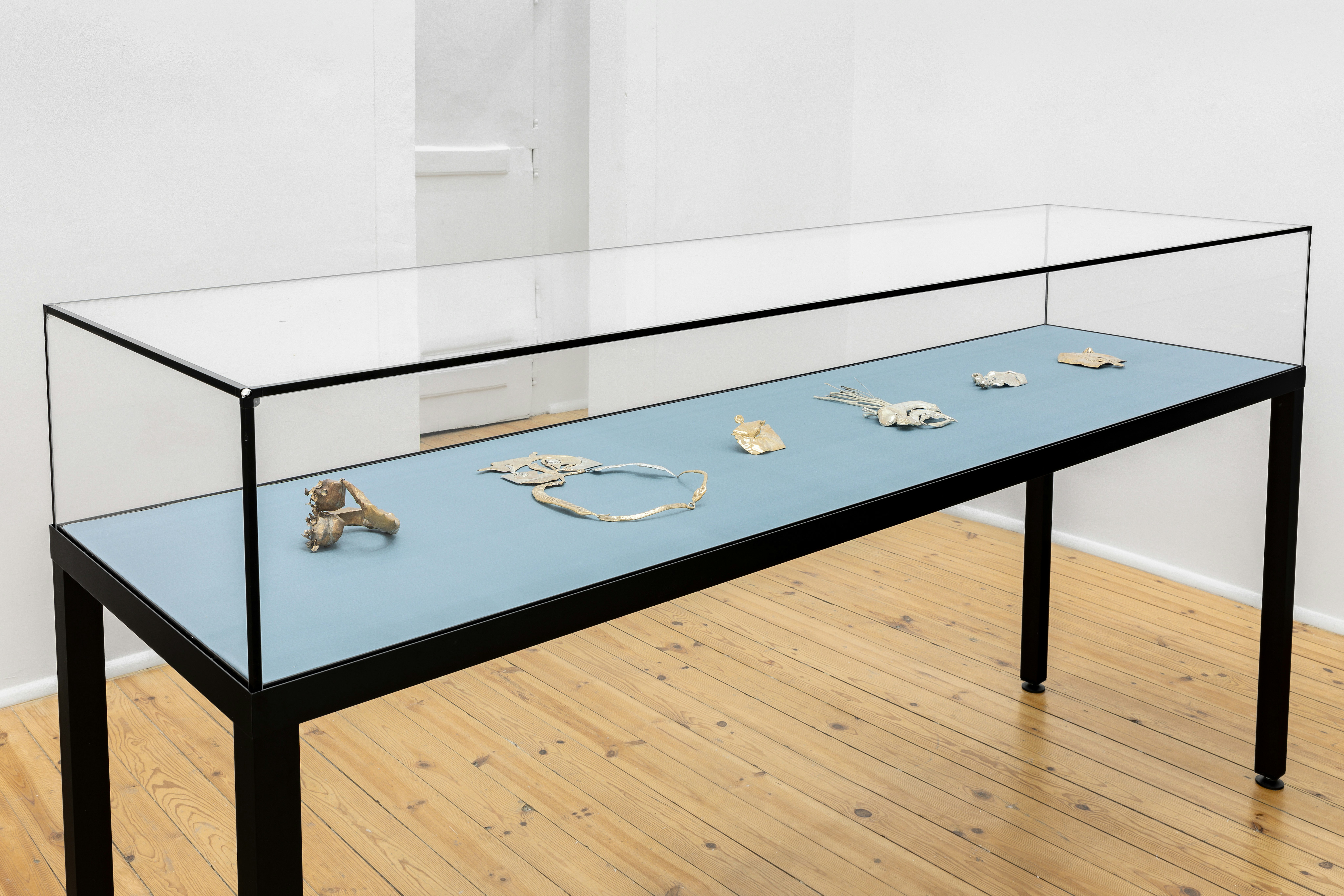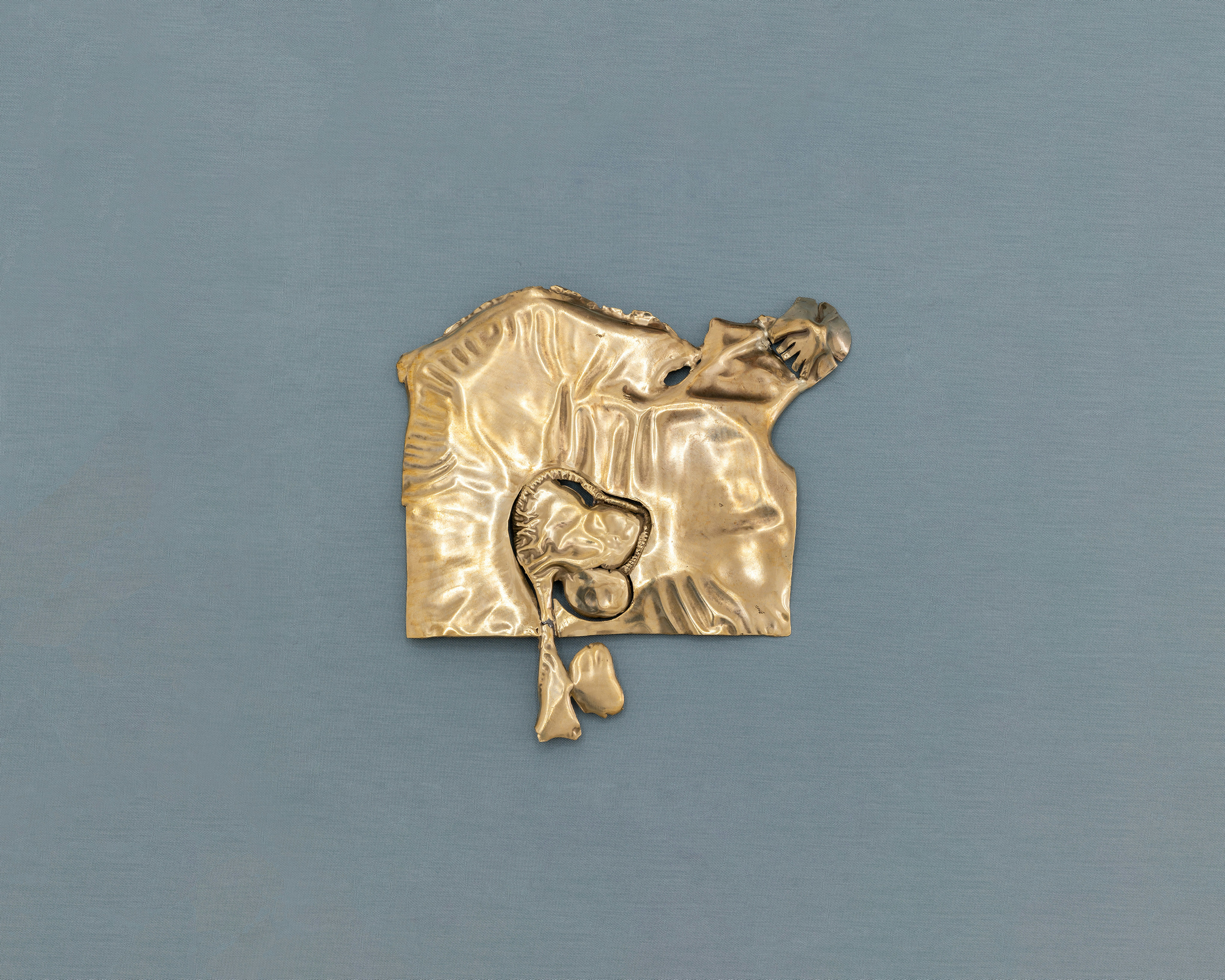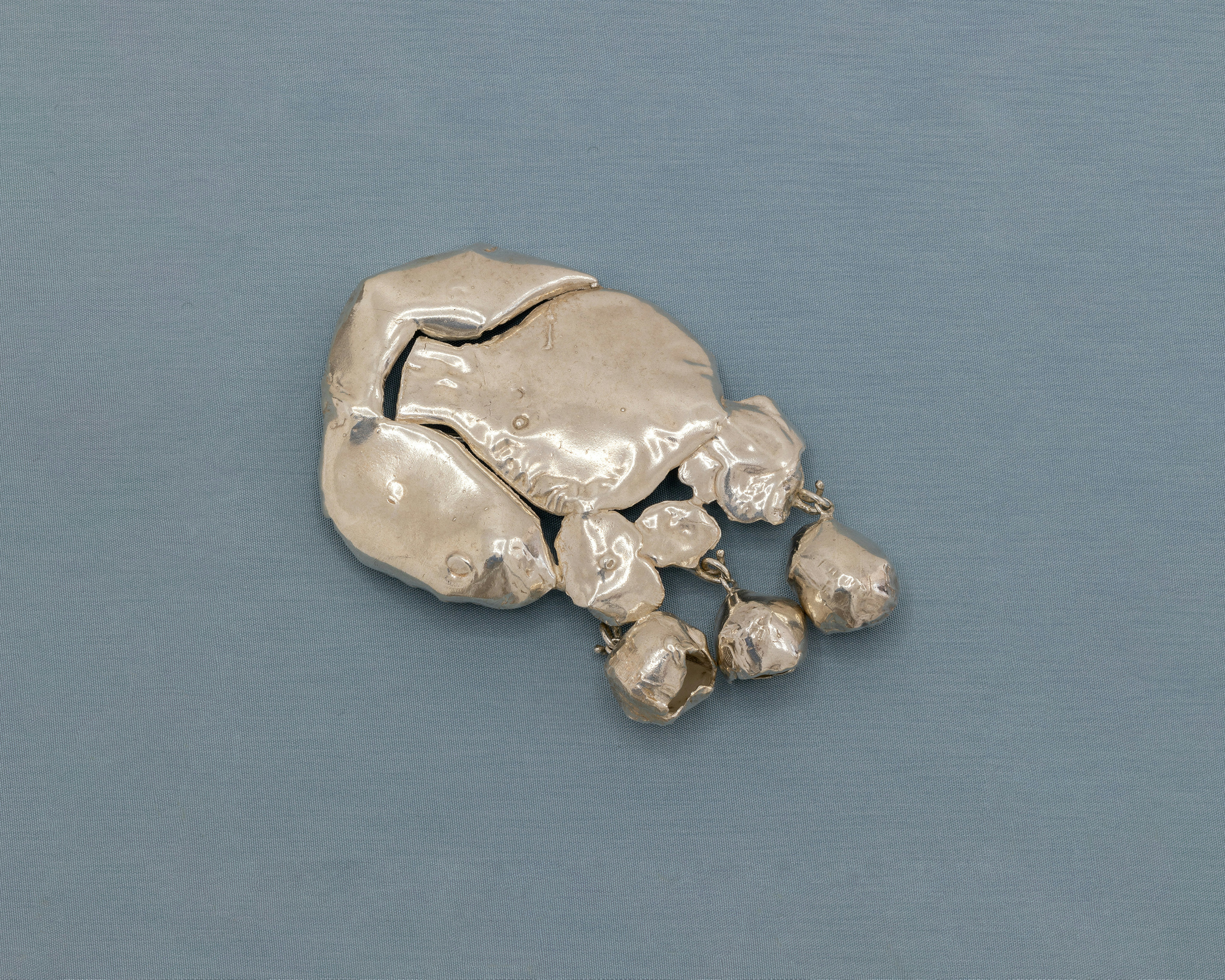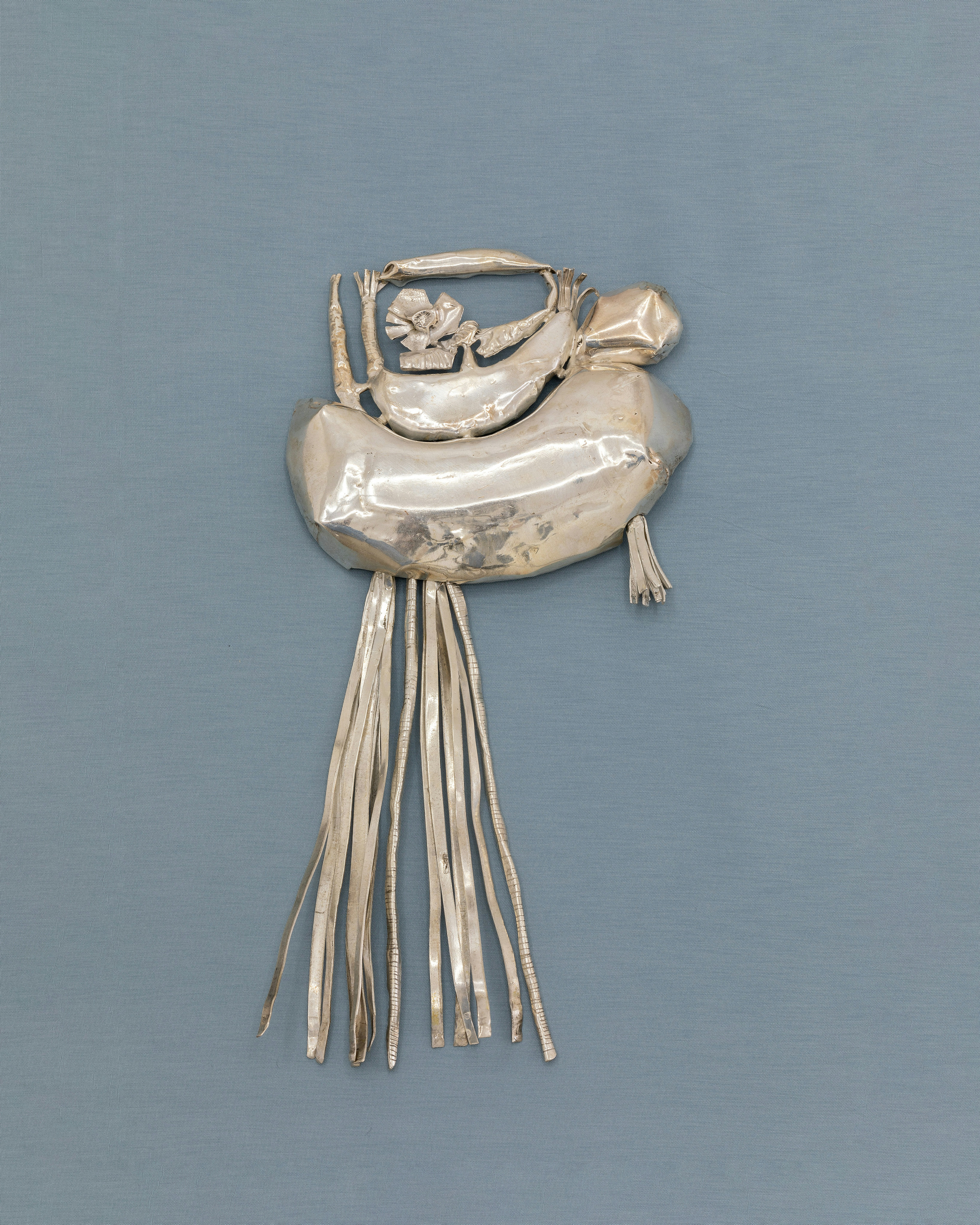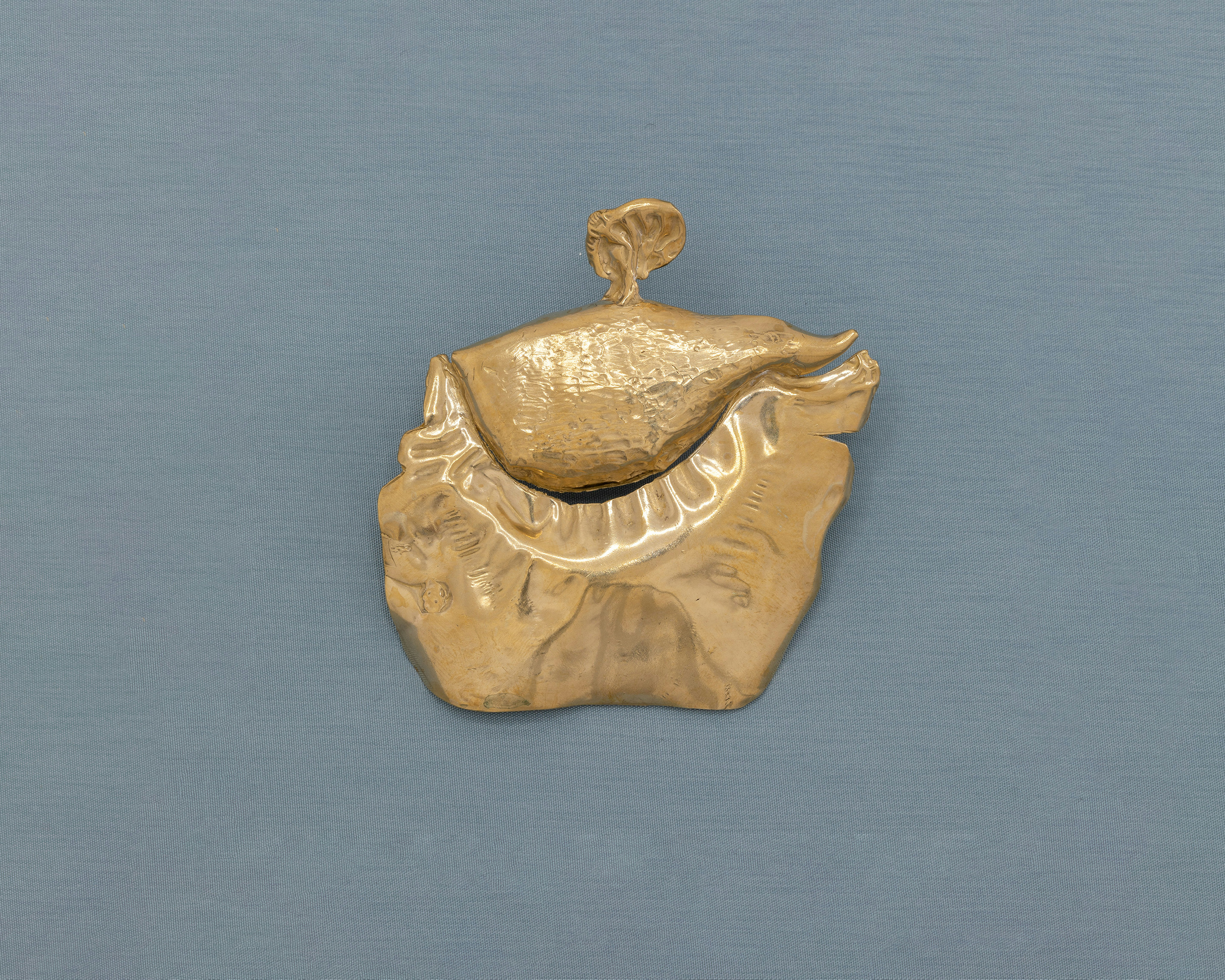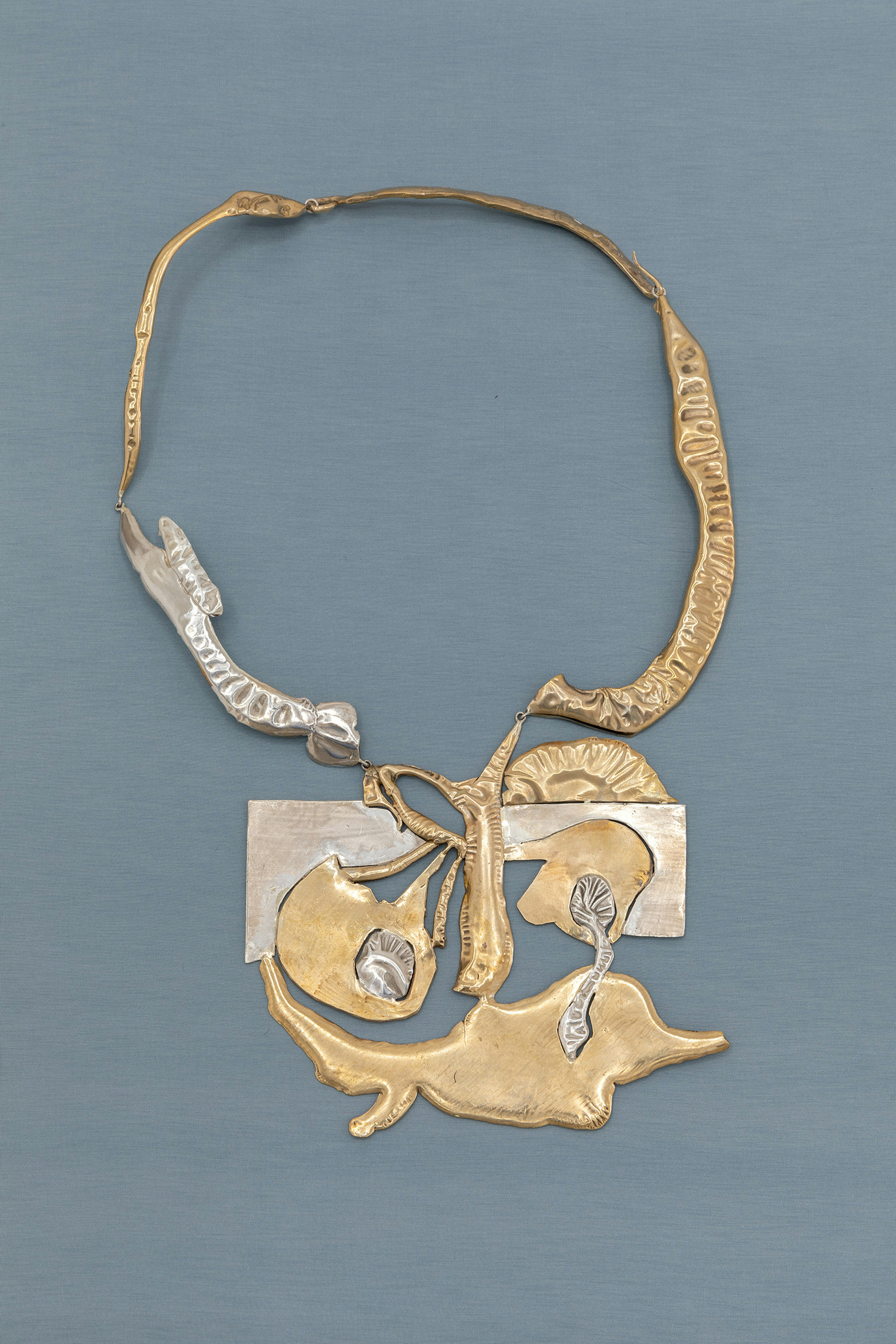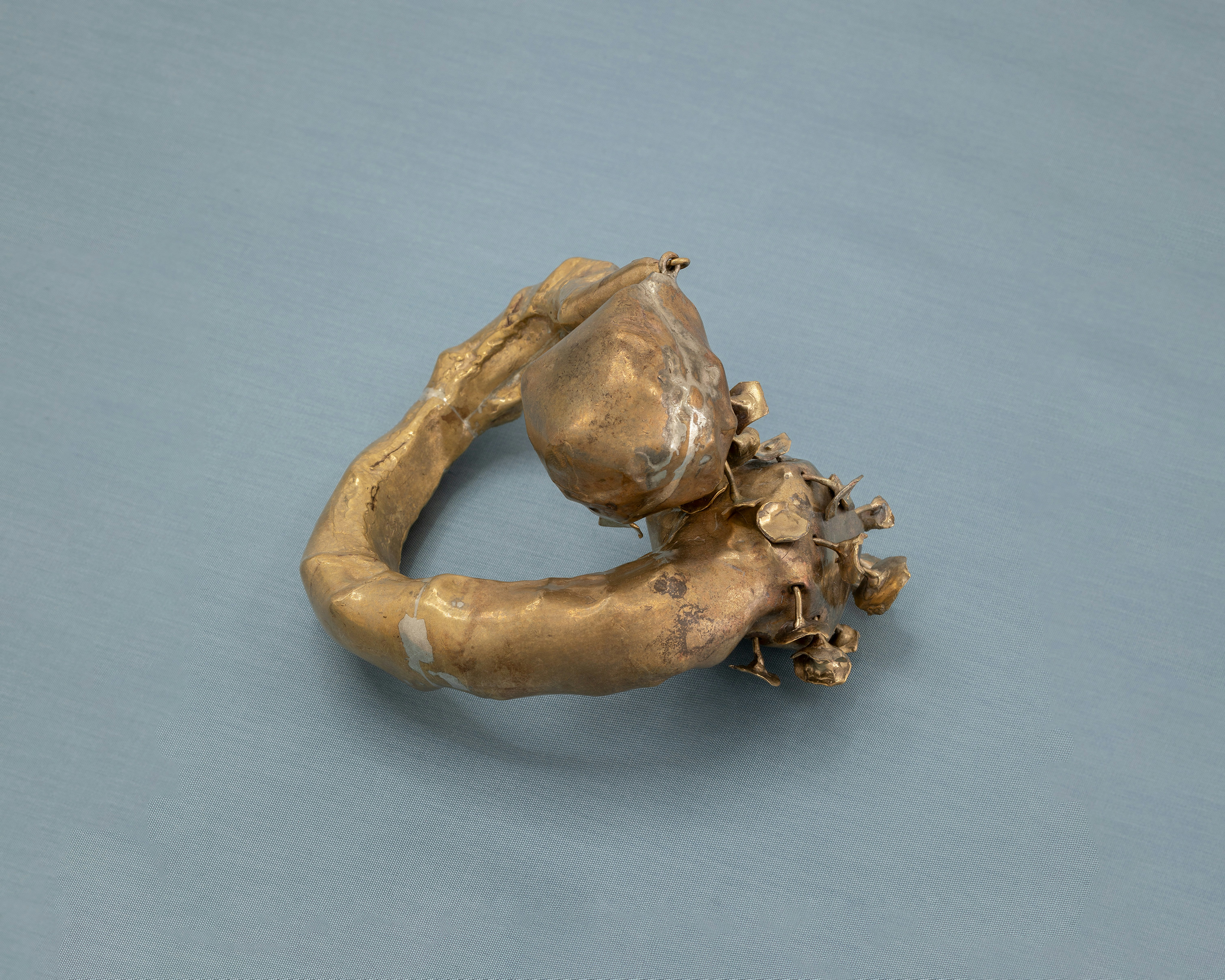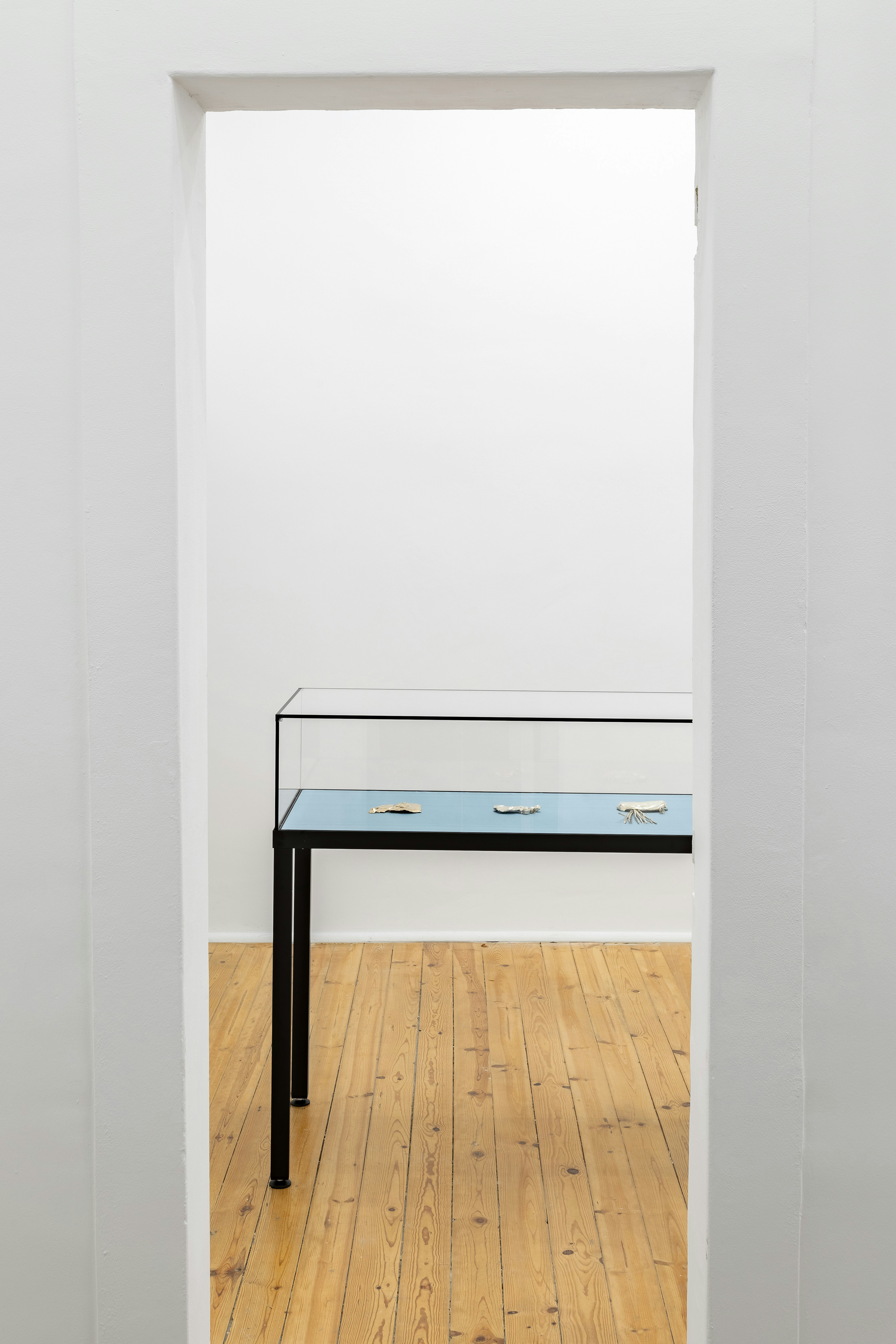ADZ
Rua do Crucifixo 28, First Floor, Lisboa
Wednesday–Saturday 11–5pm
info@adz.gallery
+351 932 989 202
Joanne Burke
'A Six Boed Poynt in a Wave'
Opening reception; Thursday, September 7th, 6-9pm
Joanne Burke’s exhibition is concerned with transfiguration, the alchemical, and both ancient and modern forms of making, encountering, and embodying. Speaking about the works in the A Six Boed Poynt In a Wave, the artist describes an acute interest in the myriad lives of both the objects she creates and the objects she mimics: their nascence, their duration, and their eventual captivity.
There is an ancient, alien quality to many of Burke’s sculptures. Tasselled, clasped, pleated, puckered, burnished and furrowed, the works’ potency lies in their balance of indecipherability and familiarity. Palm shaped and dimpled, the cast works take on a luminous tactility, an imagined charge. Burke recalls memories of objects imbued with a sacred power through childhood eyes - a purloined yellow stone ring worn to school surreptitiously; bellows admired on a mantlepiece from afar; decorative brass shoes, stiff and impractical, worn and shuffled around her grandmother’s house. The draw of these objects - coveted, admired, chronicled - lingers passively, lustrously, within Burke’s sculpture.
Joanne Burke’s sculptures embody the idea of transfiguration, recollecting both the ancient, biblical sense of the word, but also an alchemical sense of things transforming from one state to another. Speaking about her process, Burke describes the unique practice of wax water casting. Here, wax is cast in controlled water to create unpredictable skins. Through a process of whittling, melting, and reworking, the artist excavates a form, as if the objects were gradually and timorously revealing themselves. Much like surrealist grattage, this technique allows chance to factor centrally into the works. Unlike surrealist grattage, the works take on prophetic qualities in a process not dissimilar to ancient divination techniques popular in cultures across Europe used to predict fortunes through water casting.
Ghost Shark, one of the largest works within the exhibition, enlarges the familiar silhouette of the shark egg, a chimerical husk often found on the seashore. Striated and leather-like in texture, the cases have a timeless quality, invoking both the primordial with their fibrous, mushroom-like gills, and the futuristic with their alien-like encasing. The chimerical nature of these objects intrigues Burke, who recalls an old folktale instructing people to transcribe their desires within the shark egg and bury them, in order to reify their dreams. Water, and its elemental qualities of replenishment, cyclicality, and endowment, is also central to Burke’s practice. The artist likes the idea of creating a cast of water itself, transforming the illusive into the permanent, and symbolically imprinting memory, allegory, and the historical elements of water into material form. In much the same way that all water that has ever existed still exists today, Burke’s cyclical approach crystallises the inchoate.
There is a richness to the work - not just the lustrous patina of silver, bronze, and tinsel used within Burke’s practice - but also the precision of the maker's hand, imbued with the symbolic potency of touches past and touches yet to come. The exhibition’s title, a lost phrase lifted from an old text and referring to the technique of weaving a ribbon to support a jewel, belies an interest in the poetics of the traditional, the unfamiliar, and how these two categories coalesce.
Written by Lydia Earthy
